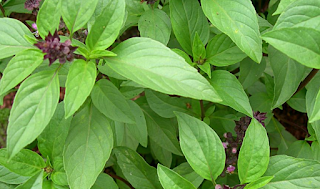What
Makes Nettle Tea So Good for You?
For anyone who has ever
explored in the forest, you learn immediately to avoid stinging nettles. The
heart shaped nettle leaves contain a serious punch by using virtually
undetectable hairs that can cause folks who come in contact with them to have
painful, red and irritated skin. However Mother Nature did not create these
plants just to hurt; remarkably, simply drying out the nettle leaves (use
gloves when handling them!) and turning them in to a tea brings wonderful
natural health benefits that have been acknowledged for hundreds of years.
Inside, it seems like
there isn't any end as to what stinging nettle tea will do for one's body. To
start with, nettle tea is loaded with vitamins: A, C, E, B1, B2, B3,
B5, calcium, iron, folate, potassium, magnesium, manganese, phosphorous,
selenium, and zinc - who needs everyday supplements after having a hot
drink of nettle tea? Also if you do not experience any health problems, having
the tea on a regular basis can really help you stay in great shape.
As stinging nettle tea is
a diuretic (meaning it flushes out your system), it aids in the relief of
bladder infections and kidney stones. It can also ease diarrhea symptoms; but
just be careful, as having a large amount also acts as a laxative!
It also contains
anti-inflammatory qualities that will help in a respite from joint pain and
arthritis (both from drinking the tea or applying it locally to the joints -
the tea, definitely not the leaves!). These properties help open sinus
cavities, too, allowing an end to hay fever along with other allergies.
If you're ill, drinking
the tea can aid your coughing and asthma. A number of people have even replaced
their coffee with nettle tea, declaring the energy and stamina they get right
after a cup kicks anything they ever got from drinking caffeine.
Woman get additional
benefits from consuming it; as I've already explained, nettle tea is known as a
natural diuretic, which eliminates water retention and bloating throughout
menstruating. Moreover, during menstruation and after giving birth, drinking it
can decrease excessive bleeding. Using the tea in the form of a wash for the
hair promotes growth helping to strengthen the root; it is important to let
that boiling herbal tea cool down before you tip it on your head.
Externally, nettle tea is
a really winner, too. The anti-inflammatory qualities that help joint
inflammation also combat eczema and zits. Kind of ironic, considering the itchy
swelling the leaves cause if they get in direct contact with the skin!
Additionally, the diuretic effect of the tea assists in keeping the body
flushed out, which always equals healthier, radiant skin.
And fear not - drinking
it is not going to cause your insides to flare up in irritation like contact
with the skin will. However, as with all natural herbs, make certain you
introduce it to your diet gradually to avoid an allergic reaction. If you're
too nervous to embark on a nettle retrieving journey by yourself (those stings
are painful!), don't worry about missing out; a nearby health food store will
surely stock nettle
tea in both pill or dried leaf format - after all, they have
been aware of the benefits forever!
In addition, you can find
easy to use, helpful information about Nettle Tea at http://www.nettleteahq.com
Nettle Tea HQ is a site
dedicated to helping everyone benefit from all that nettle tea has to offer.
Drop by and say hi!
Article Source: http://EzineArticles.com/expert/Sarah_Birmingham/1100676



